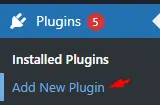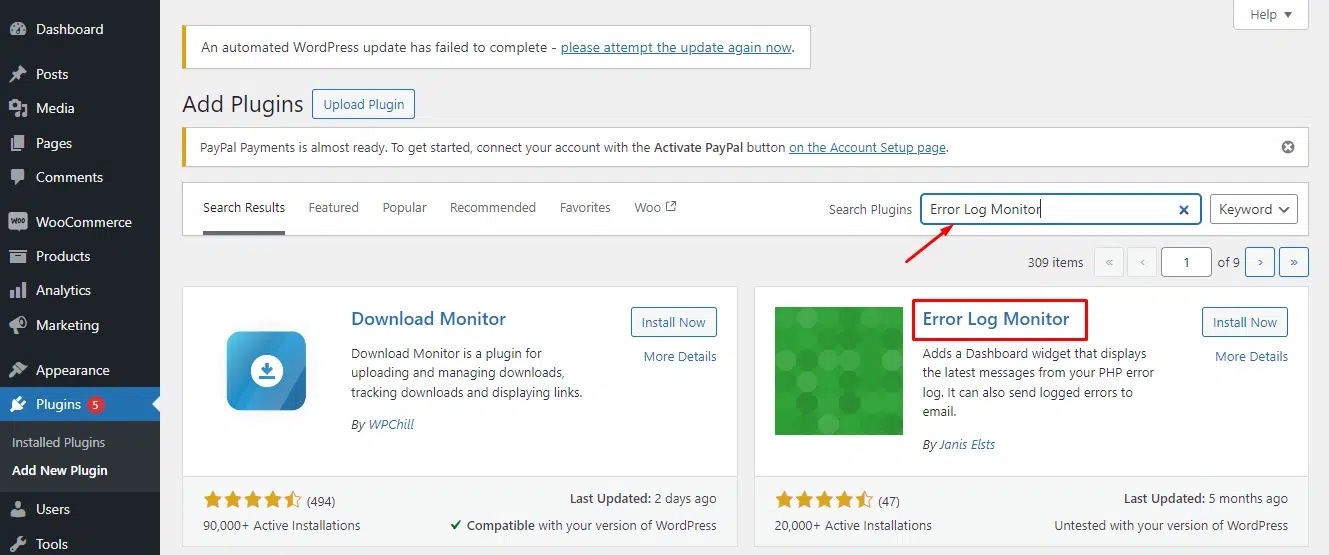The Error Log Monitor plugin for WordPress is a valuable tool for site admins and developers to track website errors efficiently. It allows you to monitor error logs directly from the dashboard and receive instant notifications for new issues. This helps identify problems like plugin conflicts, theme errors, or deprecated code that could impact site performance.
By regularly reviewing logs, you can quickly resolve issues, ensuring your site stays stable and secure. The plugin is easy to set up, even for beginners, offering a proactive way to maintain website health and enhance visitor experience.
Quick Steps
- Log in to WordPress.
- Install the Plugin.
- Configure the Plugin after activation, click Recommended Settings to set up the plugin.
- Enable Error Logging.
- Open the
wp-config.phpfile in your WordPress installation folder. - Add the following code to enable error logging:
// Enable error logging. @ini_set('log_errors', 'On'); @ini_set('error_log', 'PATH-OF-YOUR-WORDPRESS-INSTALLATION/wp-content/elm-error-logs/php-errors.log'); // Don't show errors to site visitors. @ini_set('display_errors', 'Off'); if ( !defined('WP_DEBUG_DISPLAY') ) { define('WP_DEBUG_DISPLAY', false); } - Replace
PATH-OF-YOUR-WORDPRESS-INSTALLATIONwith the actual path to your WordPress folder.
- Open the
- Access the Error Log.
Installing and configuring the Error Log Monitor Plugin
To install and set up the Error Log Monitor plugin for WordPress, follow these steps. First, log in to your WordPress site using an administrator account. Once inside the WordPress Dashboard, navigate to the left-hand sidebar, click on Plugins, and then choose Add New Plugin
In the search bar, type Error Log Monitor to find the plugin.
Click on Install Now, and after installation, hit Activate. Next, click on Recommended Settings to configure the plugin.
To fully monitor WordPress-related errors, you’ll need to edit the wp-config.php file located in your WordPress installation folder. Add the following code to enable error logging.
//Enable error logging.
@ini_set('log_errors', 'On');
@ini_set('error_log', 'PATH-OF-YOUR-WORDPRESS-INSTALLATION/wp-content/elm-error-logs/php-errors.log');
//Don't show errors to site visitors.
@ini_set('display_errors', 'Off');
if ( !defined('WP_DEBUG_DISPLAY') ) {
define('WP_DEBUG_DISPLAY', false);
}
Once configured, you can easily access and view the error log widget directly from the dashboard, helping you monitor and resolve any potential issues on your site.
Conclusion
Congratulations, you have successfully learned how to install and configure the Error Log Monitor plugin for WordPress. This streamlined process allows you to stay proactive with website maintenance, ensuring performance and security are always a top priority.
If you have any web hosting questions please feel free to reach out to us. We're happy to help.
Shared Hosting | Reseller Hosting | Managed WordPress Hosting | Fully Managed VPS Hosting
Our Guiding Principles
- Provide consistent, stable, and reliable web hosting services.
- Ensure rapid ticket response and quick resolutions to issues.
- Never saturate or over-provision servers to ensure stability and speed for our customers.
- Use only high-quality enterprise-class hardware to ensure minimal downtime from hardware failures.
- Provide clear pricing with no hidden fees or gotchas.




